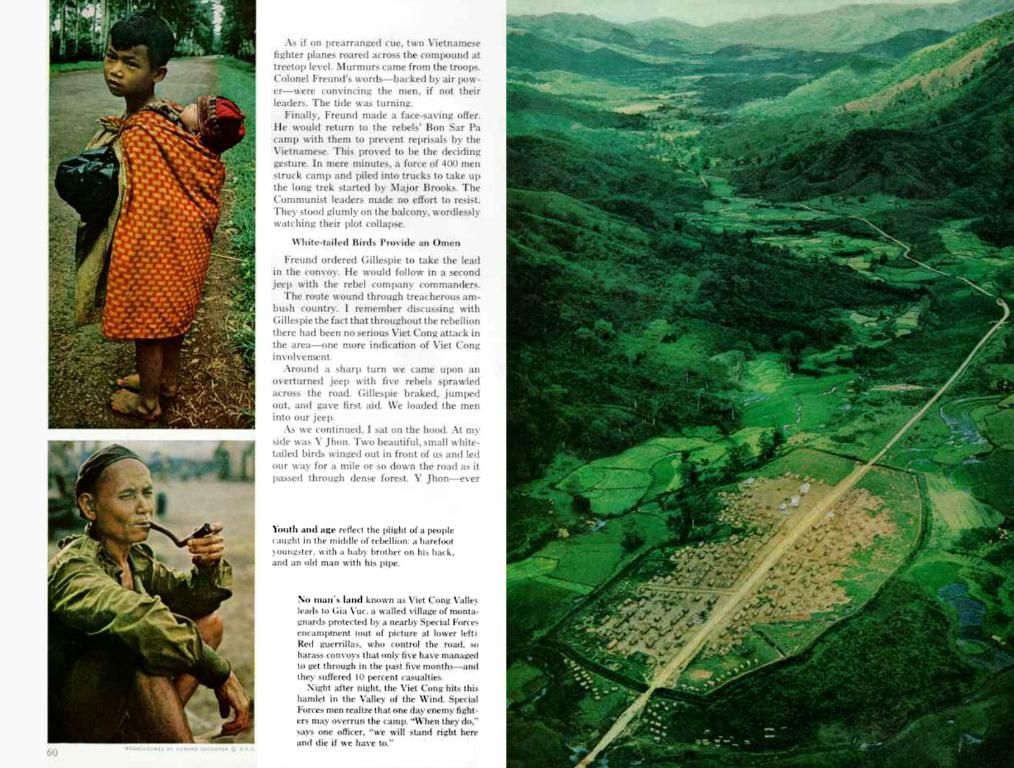Hidden Medicinal Treasure: The Unrevealed Potential of Black Ginger Farming in Mizoram
Stationed in the heart of the verdant Mizoram hills lurks an unsung hero, brimming with untapped commercial potential – the black ginger, scientifically known as Kaempferia parviflora. This petite herb, recognized by its deep purple rhizomes, has long been esteemed in Southeast Asia for its potent medical properties. Traditionally, some Mizo households have utilized it in its raw form to treat common ailments like stomach pain and dysentery, passing this wisdom down through generations quietly.
Despite being native to Mizoram and naturally thriving in its climate, black ginger remains severely undervalued by the state's farmers. Instead of being cultivated in fields as a lucrative crop, it continues to creep wildly in scattered forest patches. This represents a missed opportunity, as black ginger is rich in methoxy flavones - natural compounds science has discovered to lower inflammation, combat cancer, and boost physical energy and endurance.
Across Asia, black ginger is gaining traction in health food, cosmetic, and herbal medicine markets. However, in Mizoram, its cultivation remains minimal due to a lack of scientific knowledge, market access, and institutional support. With its favorable climate and the herb's high monetary value, Mizoram stands ripe for becoming a hub for black ginger farming and herbal exports – if the right steps are taken.
The Healing Powers of Black Ginger
Black ginger belongs to the ginger family and bears a passing resemblance to its cousin. Cut it open, though, and the rhizome reveals a deep violet or dark purple flesh, earning its name.
This short, upright herb reaches a height of 20-25 cm, occasionally growing up to 90 cm. It boasts broad green leaves bordered with a dark red edge, one of its distinctive features. While the plant is still primarily cultivated for domestic consumption in Mizoram, research done abroad expands its uses beyond treating diabetes, obesity, ulcers, and skin diseases.
In Mizoram, villagers traditionally chew raw rhizomes or dry the powder as a remedy for stomach issues. Black ginger is also consumed in juice or paste form to ease chronic ulcers and digestive troubles. Abroad, notably in Thailand, it's refined into capsules, powders, skin creams, and tonics. Its price, particularly when dried or processed into oleoresin for pharmaceutical companies, is considerably high.
Ideal Growing Conditions and Methods
Black ginger prefers warm and humid weather with partial shade, making Mizoram an ideal location. It flourishes in sandy loam soil with organic matter and requires temperatures ranging from 21-30°C. Despite the favorable climate conditions, the crop is typically overlooked as it's considered a wild crop instead of a farm crop. It performs optimally under partial shade, such as net houses or mixed cropping associations with taller crops.
Farmers in Mizoram prepare the land in March-April by making raised beds and applying farmyard manure to the soil to enrich it. Seed rhizomes are treated to promote breaking of dormancy and prevent fungal infection. In traditional farming, farmers usually cultivate it alongside other crops in jhum fields, but in commercial farming, separate plots and proper treatment at the time of weeding, irrigation, and disease management are necessary.
While black ginger is generally disease- and pest-resistant like rhizome rot and leaf spot, it demands good drainage and attention, particularly during the monsoon months. Weed management is essential, particularly during sprouting and rhizome development. To date, no variety has been officially released in India, but local varieties like IC-0647186 have demonstrated strong potential in trials.
Roadmap for Mizoram
For black ginger to reach its full potential, Mizoram must transition from indigenous and in-home consumption to structured, scientific farming. Producers need to be informed of the value of the crop and the market through extension and training programs.
Germplasm collection, selection of high-yielding varieties, and nursery establishment can enhance the quality of planting material. Processing units at cooperative or village levels are also essential for farmers to add value and command better returns.
With support from the government, research investments, and training of farmers, black ginger can become a profitable cash crop for Mizoram, as turmeric or ginger is in other parts of India. The crop can provide local people with increased incomes and contribute to herbal exports and health-oriented industries.
Black ginger is no longer merely a wild plant hiding in the shadows of the forest. It represents untapped wealth. If the farmers of Mizoram take the appropriate actions, they can transform this dormant medicinal plant into a goldmine. It's high time that the people, scientists, and policymakers recognize its worth and seize the opportunity before its natural richness is lost. The fate of black ginger is not in the forest, but in the careful hands of Mizoram's farmers.
First published on: 06 Jun 2025, 12:24 IST
Additional Insights:
- Monetization Opportunities: In addition to herbal medicine and personal wellness products, black ginger also finds a place in the flavor industry, particularly in chocolate manufacturing and the production of flavored teas.
- Export Potential: As black ginger demand continues to grow globally, Mizoram could explore exporting processed products, such as powder and oleoresin, to leverage higher market prices and ensure a steady income for local farmers.
- Scientific Research and Development: Conducting further research on black ginger's health benefits, potential applications, and cultivation techniques can lead to improved productivity, higher-quality products, and increased demand, driving growth in the industry.
- The medicinal properties of black ginger, now recognized in the health and wellness sphere worldwide, echo its powerful role in traditional Southeast Asian healing practices.
- With Mizoram's favorable climate and the high monetary value attributed to black ginger, tapping into its scientific potential through structured farming could unlock significant health and economic benefits for the region.




